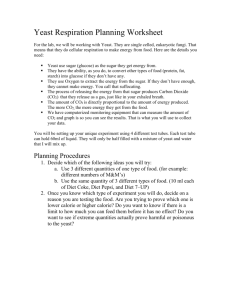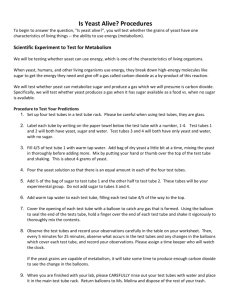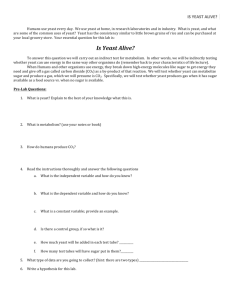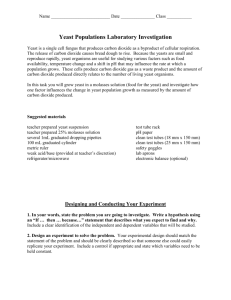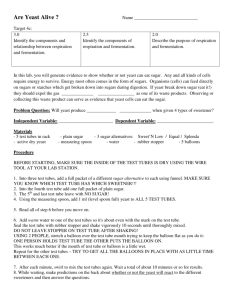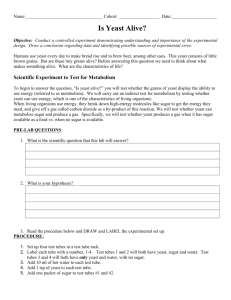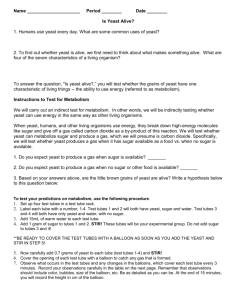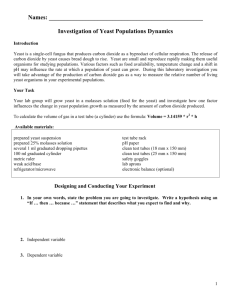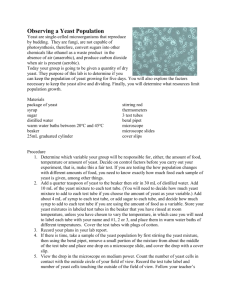Lab1 Yeast Expt
advertisement
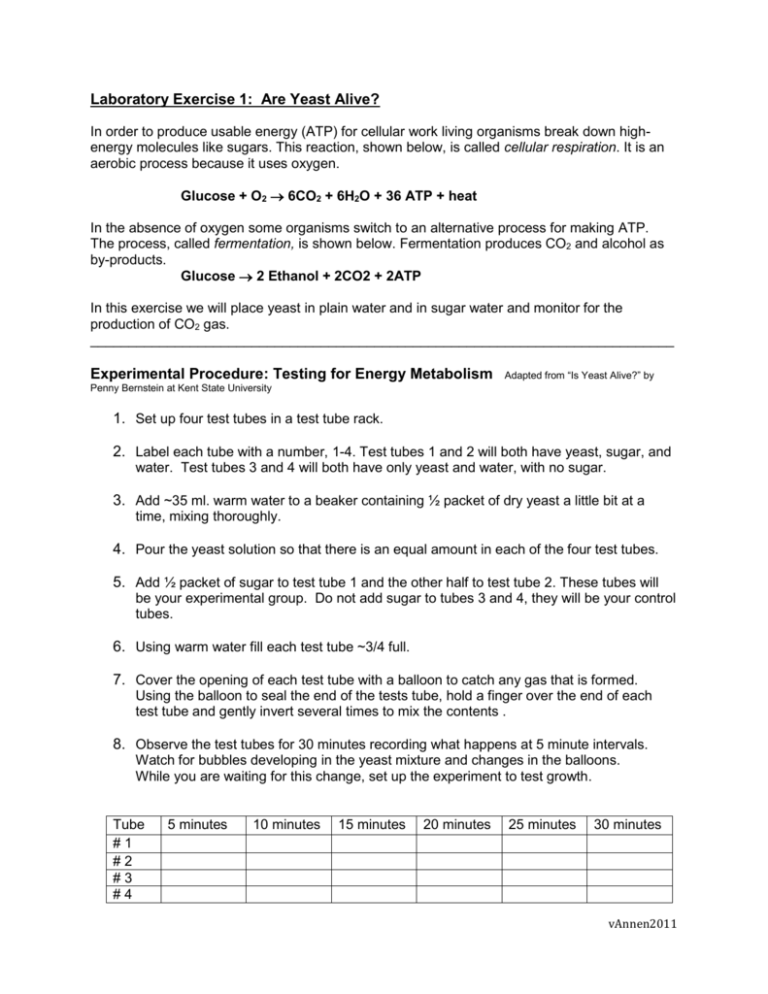
Laboratory Exercise 1: Are Yeast Alive? In order to produce usable energy (ATP) for cellular work living organisms break down highenergy molecules like sugars. This reaction, shown below, is called cellular respiration. It is an aerobic process because it uses oxygen. Glucose + O2 6CO2 + 6H2O + 36 ATP + heat In the absence of oxygen some organisms switch to an alternative process for making ATP. The process, called fermentation, is shown below. Fermentation produces CO2 and alcohol as by-products. Glucose 2 Ethanol + 2CO2 + 2ATP In this exercise we will place yeast in plain water and in sugar water and monitor for the production of CO2 gas. ____________________________________________________________________________ Experimental Procedure: Testing for Energy Metabolism Adapted from “Is Yeast Alive?” by Penny Bernstein at Kent State University 1. Set up four test tubes in a test tube rack. 2. Label each tube with a number, 1-4. Test tubes 1 and 2 will both have yeast, sugar, and water. Test tubes 3 and 4 will both have only yeast and water, with no sugar. 3. Add ~35 ml. warm water to a beaker containing ½ packet of dry yeast a little bit at a time, mixing thoroughly. 4. Pour the yeast solution so that there is an equal amount in each of the four test tubes. 5. Add ½ packet of sugar to test tube 1 and the other half to test tube 2. These tubes will be your experimental group. Do not add sugar to tubes 3 and 4, they will be your control tubes. 6. Using warm water fill each test tube ~3/4 full. 7. Cover the opening of each test tube with a balloon to catch any gas that is formed. Using the balloon to seal the end of the tests tube, hold a finger over the end of each test tube and gently invert several times to mix the contents . 8. Observe the test tubes for 30 minutes recording what happens at 5 minute intervals. Watch for bubbles developing in the yeast mixture and changes in the balloons. While you are waiting for this change, set up the experiment to test growth. Tube #1 #2 #3 #4 5 minutes 10 minutes 15 minutes 20 minutes 25 minutes 30 minutes vAnnen2011 ______________________________________________________________________ Experimental Procedure: Testing for Cell Division [Adapted from “Is Yeast Alive?” by Penny Bernstein at Kent State University] 1. Obtain a Petri dish with yeast growth media, and label the bottom with your name, teacher, and class period. 2. Spread 5-10 brown grains of yeast across your plate. 3. Seal your plate and place it in an incubator sleeve. 4. Your plates will be incubated at 37° C until the next lab class. Observations At the next lab class, inspect your plate. Do you see any signs of growth on the plate? Sketch what you see. Observe a sample under the microscope. Draw what you see Plate Microscope ____________________________________________________________________________________ Results (Answer with your group on a Group Results Sheet and turn in at the end of lab) 1. Discuss the results you obtained with your group. How do you interpret your results? 2. Why is it better to have two test tubes with yeast, sugar, and water and two test tubes with just yeast and water, instead of only one test tube with each type of mixture? 3. In an experiment, what is a ‘control’? 4. When you make bread, if you just mix flour, sugar and water, the dough does not rise, and the bread will be flat and hard. Adding yeast causes the bread to ‘rise’ Explain this. 5. Yeast is added to grains to make beer and to grapes to make wine. The mixtures are covered so no oxygen is available. Explain why. vAnnen2011
